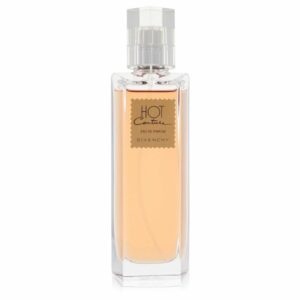Couture perfume is an umbrella term for describing all personal perfumes worn on the skin. Couture perfumes are also known as ‘fine fragrance.’
History of couture perfumes
The first couturier to work on perfume was Paul Poiret in 1911. He created a specialized company to pay tribute to his daughter. The brand was named “Le parfum de Rosine.”
Other successful designs soon followed. A prime example is Gabrielle Chanel’s iconic Chanel N° 5 which she launched in 1921.
SEE ALSO: Scream Womanhood With Chanel N° 5
The fashion houses, which at the time had a very elitist clientele, now offer accessible products in the form of fragrances. This also provides fashion houses with a much wider customer base.
In the early 40s, perfume houses still dominated sales, but from the second half of the century, the trend was finally reversed. Couture fragrances gained ground and were demanded even more than perfumes by traditional perfumers.
How do you recognize couture perfumes?
The presence of any or some or all of these features indicates that a fragrance is a couture fragrance:
1. Complexity
Intricate and sophisticated fragrance notes combined in a complicated manner are a common feature in the perfumes created by fashion houses such as Chanel, Estee Lauder, Dior, Gucci, Versace, Hermes, etc.
2. Luxurious displays
Usually, fine fragrance collections are displayed in the luxury sections of stores that sell them. They are bought by people who bank on the prestige of the producing brands, so, the sellers have to market that image of luxury.
The perfumes are typically displayed on a perfumery counter or a branded ‘shop-in-shop’. Shop-in-shop is usually a branded section in a department store where products from one designer (the brand name displayed) are sold.
3. Brand ownership
There is usually a very close association between the fashion house and the couture perfume house. The perfume brand and the fashion house may be owned by the same parent company or part of a conglomeration of companies.
Types of couture perfumes


1. Prestige Fragrances
These fragrances are sold by fashion houses such as Chanel, Estee Lauder, Dior, Gucci, Versace, Hermes, etc.
Prestige fragrances are higher-priced than scents sold in a typical drugstore. Typically, these fragrances can be bought only through leading department stores and perfumeries.
2. Artisan or Niche Fragrances
a. Niche perfumes are usually produced by small companies whose only products are fragrance products. From the ordinary meaning of the word “niche,” one can deduce that such perfumes will be different from what is ordinarily sold in departmental stores.
b. Artisanal products are usually handmade. Although that is not a guarantee of quality, artisanal products are original and creative because they are personal expressions of the creators. Naturally, the number of artisanal fragrances is limited because they are not mass-produced.
3. ‘Masstige’ Fragrances
The word ‘masstige’ is a combination of ‘mass’ and ‘prestige’. Masstige fragrances are less expensive than ‘prestige fragrances’ and they can be found at drugstores, pharmacies, and sometimes supermarkets.
4. Celebrity Fragrances
Many celebrities now own or collaborate with brands to create perfumes named after the former. Fans readily purchase the perfumes as part of their loyalty to the celebrities. Celebrity perfumes tend to be in the same price ranges as ‘masstige’ fragrances.

